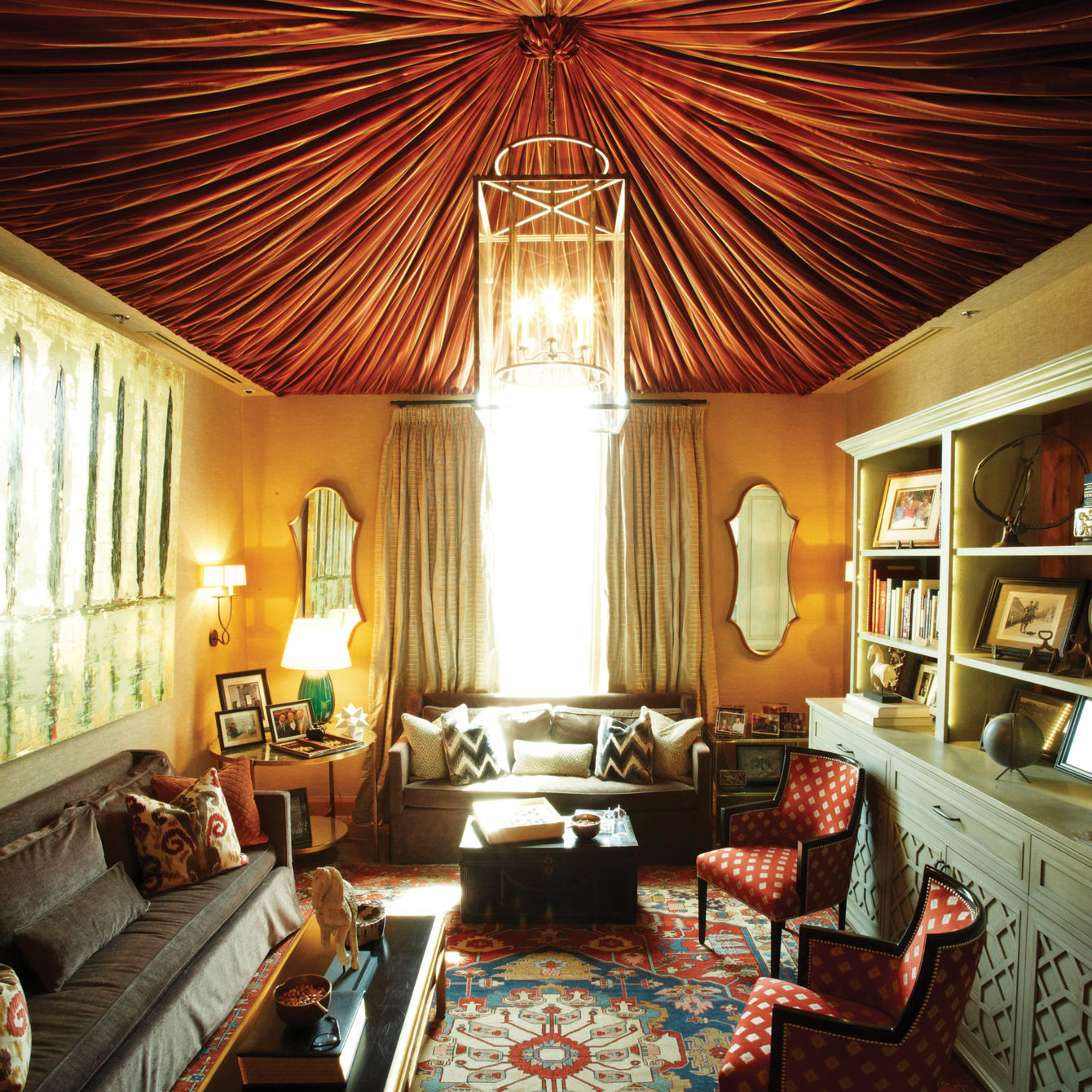Ask Darioush Khaledi, proprietor of beloved estate winery Darioush in Napa Valley, about his modest beginnings and journey to the United States, and he’ll respectfully and humbly tell you he is living the American dream. There’s one date nearly 55 years ago—while he still lived in his native Iran—that’s the most significant of his life.

“In the morning I paid my student loan [for a master’s degree in civil engineering],” recalls Darioush. “Two of my classmates and I formed a construction corporation and registered that day, and that night was my wedding with my wife, Shahpar. So I never forget November 6, 1968.”
The next day, instead of going on a honeymoon, Darioush received a contract from the Iranian government and began working as a field engineer for the next eight years with a grueling travel schedule and relentless hours. “The first contract was for a few thousand dollars,” he explains. “The last contract was a few hundred million dollars. Within eight years, I was working very hard with my two partners, and I was constantly traveling between the fields, 26 days a month.”
Later while on a yearlong sabbatical, Darioush and Shahpar visited her sister in Redondo Beach. “I discovered Palos Verdes and fell in love with the environment,” recalls Darioush, who at the time didn’t know a word of English, and French was his second language. “A week later we bought a house.”
He and Shahpar (who studied English) first arrived on a visitor visa. Business ownership was a viable option to obtain a green card and permanent residency, so they bought a small supermarket on 228th Street and Vermont Avenue in Torrance.
The Iranian Revolution took place in 1979, and Darioush’s government contract was confiscated—as was his business. To support his family and two children, he began working as a box boy in his own grocery store and started learning English.
Twenty years later, his K.V. Mart Co. operated 41 locations of Top Valu Markets and Valu Plus warehouse stores. At one time it was the largest family-owned and privately held grocery chain in California. He sold the company a few years ago.

Throughout his life, a hobby stemming from his father’s influence evolved into his full-blown passion and current business for two decades: wine. “There are three things I got from my father,” says Darioush. “One is the drive. He was always pushing me. The second is horses; he was a horseman and a polo champion. (I love horses and I ride regularly.) The third is wine.”
He became a wine collector and traveled regularly to Bordeaux, France. A friend even offered him a property for sale there. But it was a fateful initial trip to Napa 32 years ago for the couple’s 20th anniversary that changed everything.
“We were having our anniversary dinner on the terrace at Auberge at the restaurant,” explains Darioush. “When I opened the wine list, I didn’t have any knowledge of California wine. So I asked the sommelier to bring us some wine from [Rutherford] vineyard, and he brought us 1984 Caymus Special Selection Cabernet Sauvignon. I drank that wine and said, ‘Wow! This is a good wine.’”
“There are three things I got from my father. One is the drive. He was always pushing me. The second is horses; he was a horseman and a polo champion. (I love horses and I ride regularly.) The third is wine.”
After discovering many Napa Valley wineries, doing extensive research, and meeting wine luminaries including Charlie Wagner and Robert Mondavi (who became Darioush’s mentor), he and Shahpar decided Napa was an easier commute than Bordeaux from the South Bay. They began looking for properties to establish a winery. During one of his many visits, he encountered a 30-acre abandoned winery and later met with owner George Altamura in 1998.
“He was a first-generation Italian American, and I’m a first-generation Iranian American. We clicked in the first few minutes, and we asked the broker to leave the room,” explains Darioush of George; the two became best friends. “Ten minutes later, we asked him to come back in, and we shook hands. Twelve days later, Shahpar and I were proud owners of this winery.”

Initially operating a temporary tasting room from a trailer, the now two-story, 22,000-square-foot winery—replete with the family’s private residence and wine cellar—opened to the public in 2004. Today it lures wine aficionados from all over the globe with 11 types of varietals spanning cabernet sauvignon, shiraz, viognier, chardonnay and Darius II—a collectible wine featuring bottles clad with historical Persian artwork that was hand-selected and licensed from the Victoria and Albert Museum’s collection. They also produce 25 cases of extra-virgin olive oil per year from olive trees on the property.
Designed by Santa Monica–based architects Ardeshir and Roshan Nozari (who designed the Khaledis’ former home in Palos Verdes before they moved to Rolling Hills two years ago), the winery features a bronze statue and fire feature with the inscription “in our hands;” an outdoor amphitheatre; a kitchen headed up by executive chef Sean Massey; and 48 columns made of yellow travertine that was mined from quarries near the ruins of Persepolis—echoing the 72 original columns found in Persepolis.
“It’s not a replica; it’s inspired by Persepolis,” explains Darioush, who became a United States citizen in 1982 and in 2008 was awarded the Ellis Island Medal of Honor, which celebrates the contributions immigrants have made to our nation. “We couldn’t put them all here, but it’s a small version of that.”
Darioush is a sponsor of the current exhibit at the Getty Villa, Persia: Ancient Iran and the Classical World (on display until August 8), and he is chair of OLE Health—an organization that supports farmworkers and sees 400 patients a year. He recently donated $100,000 to Napa Valley College’s Teaching Winery.
“When I bought my winery, I had no idea,” he explains. “It was just a hobby. I love meeting people and having the family. We don’t call them employees; we call them members of the family. When I’m in L.A. I miss them, and when I come back I feel like I’m coming home.”










